Investors now drive one-third of home purchases. If you’re not using this data, you’re guessing.
The market isn’t frozen—it’s moving without you. With financed buyers sidelined, investors captured 33% of Q2 purchases. Learn where they’re winning, what they’re paying, and how capital is shifting so you can act—not react.
33%
Market Share
526,372
Homes Purchased



150M+
U.S. Properties

1000+
Data Points

20,000+
BatchService Users

2021
Founded
About BatchData
Founded in 2021, BatchData is a comprehensive real estate data platform providing enterprise-grade APIs with access to 1000+ data points for over 150 million U.S. properties. Serving businesses from startups to Fortune 500 companies, BatchData delivers robust lead generation, AI predictive data, skip tracing, data enrichment, and seamless integrations with real-time updates and industry-leading accuracy.
Unlike static data aggregators, BatchData’s in-house data science team enriches datasets from multiple tier-one providers while leveraging real-time feedback from over 20,000 BatchService users to maintain the highest data quality standards in the industry.
This report is presented in conjunction with CJ Patrick Company.

95%
Small Operators

$513k
National Average

47%
Sold Back to Families

Q2
Pivoting to Build-to-Rent
Why this report matters
Find the edge:
Small operators—not mega funds—own 95% of investor homes. Learn how they source deals and price risk.
Buy value, not headlines:
Investors paid ~$455k vs ~$513k national average—older homes, less bidding-war pressure.
Know the exit: 47%
Know the exit: 47% of investor sales go back to families—plan renovations and dispositions with confidence.
Follow the money:
Follow the money: Institutions were net sellers in Q2 and are pivoting toward build-to-rent—leaving opportunity pockets for smaller portfolios.

What you’ll get inside
Market share map:
State leaders/laggards and the why behind each.
Cash vs. financing:
How liquidity is reshaping price and time-to-close.
Institutional shift:
Buy/sell counts, BTR acceleration, and where they’re pulling back.
Playbooks:
Four forward scenarios (rates, distress, affordability, policy) and how to position for each.
Proof & sources:
Transparent methodology and references—no black box.
Who should read this
Small investors control 90% of investor-owned housing, shattering conventional wisdom about institutional dominance.


Operators & small portfolios
Identify value segments where institutions are stepping back.
Lenders & capital partners
Underwrite faster with clear comps and exit paths.
Proptech & data teams:
Align product bets to where investor demand is actually moving.
The Institutional Retreat Continues
For the sixth straight quarter, mega-investors (1,000+ homes) were net sellers, demonstrating a strategic withdrawal from the single-family market.
They sold 5,800 homes while buying just 4,069, signaling a pivot. This capital isn’t disappearing-it’s being rotated into build-to-rent developments, addressing housing supply from a different angle and creating opportunities for smaller, more agile investors.
5,800
Homes Sold
4,069
Homes Purchased
-1,731
Net Deposition
Large Investor Net Dispositions
What you can do with it
Three states dominate investor ownership, accounting for nearly 25% of all investor homes nationwide
1
Prioritize markets
With the highest investor win-rates.
2
Tighten offers
Using price deltas by asset age/condition.
3
De-risk exits
With disposition flows back to owner-occupants.
4
Adjust funding mix
Where cash dominates to cut fall-throughs.
Investor Purchase Share Hits 5-Year High
Investors Capture One- Third of Home Sales
In Q2 2025, investors bought 345,752 homes- 33% of all sales. This record share isn’t driven by a speculative frenzy, but by necessity.
With mortgage rates averaging 6.7%, traditional buyers are priced out. Cash-rich investors are filling the void, providing essential liquidity that prevents market stagnation and price volatility. This marks a structural shift where investors act as market stabilizers, not disruptors.
- A structural shift: Investor share averaged just 18.5% from 2020-2023.
- Disciplined buying: Despite record share, total investor purchases declined 12% year-over-year.
Market Reality Check
Understanding the forces reshaping residential real estate
Affordability Crisis Deepens
Six-figure incomes are now required in 54% of U.S. markets to afford median-priced homes. Nearly 60% of households cannot afford a $300,000 home under current rate and price conditions.
Strategic Market Segmentation
Investors target older, lower-priced homes averaging $455,481 - well below the national average of $512,800. This reduces direct competition with families seeking move-in ready properties.
Institutional Retreat Continues
Large institutions sold 5,800 homes while purchasing just 4,069 in Q2, marking six consecutive quarters of strategic withdrawal while small investors fill the gap.
Inventory Returns to Families
47% of investor sales go to traditional homebuyers, replenishing owner-occupied stock and demonstrating that investor activity ultimately benefits family homeownership.
Pricing Strategies Reveal Market Segmentation
$366,424
Average Investor Price
Below market average
$503,800
Market Average Price
All home sales
$262,064
Large Investor Avg
Focus on Midwest & South
Why BatchData
Investor Pulse is built on BatchData—property, owner, and transaction intelligence in one platform. It’s the modern alternative to legacy providers: faster updates, cleaner entity resolution, and an API your team actually wants to use.
Key Takeaways
Critical insights that define the future of investor participation in residential real estate
$366,424
26.8% reflects buyer retreat, not investor expansion – Traditional homebuyer withdrawal creates vacuum filled by cash-equipped investors
Small Investor Control
90% market control despite institutional headlines – Policy focus on large investors misses entrepreneurial reality
Geographic Strategy
Institutional Retreat
Pricing Discipline
Structural Change
Get the Complete Analysis
Access detailed methodologies, additional data points, and strategic recommendations for your investment decisions.
- Quarterly trend analysis and forecasting
- Market-specific investment strategies
- Detailed demographic and pricing data
- Executive summary and policy implications